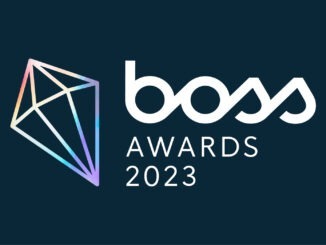
As reported by ICAEW, SMEs face the challenge of embracing sustainability as net zero goals slip down their priority list, putting their very existence at risk in a world confronting the stark reality of climate change
Without a clear plan for transition, many companies may cease to exist in the near future. As the world witnesses record-breaking hot temperatures this summer, the reality of climate change is encroaching on our daily lives. It’s no longer possible to ignore it.
Regulations may not yet be directly mandatory for SMEs, but they are trickling down. With large organisations required to report their Scope 3 emissions, the pressure is on smaller suppliers and the supply chain.
Because of this, SMEs and their accountants will eventually be required to complete an environmental, social and governance (ESG) risk assessment, due to pressure from lenders, investors and large supply-chain providers as well as staff and prospective employees. It’s essential to prepare for these data requests.
Financial services expert Neil Campbell says: “A risk assessment is about your impact on the planet, society and the people who work in your organisation, but also how you consume and what you consume, and the price you pay for that.”
Admittedly, it’s not easy to focus on long-term sustainability amid this period of tough economic challenges, but there are commercial benefits to be gained if SMEs confront the challenge early on.
An ESG risk assessment will vary greatly for each SME, depending on size and industry sector. Once a business owner has all of this data and has an established risk register process in place, they can begin their ESG review.
Mark Lumsdon-Taylor, partner at MHA, an independent member of Baker Tilly International, recommends breaking down a risk assessment into three parts:
- economic value;
- energy, climate and environmental value; and
- governance and societal value.
“We advise businesses to have their own independent environmental, social and governance risk register, which has its own calculation of materiality within it. This can be broken down into the areas of business it is most relevant to. It’s a live document.”
Determine your current and future requirements
ESG means different things to different people and sectors, says Lumsdon-Taylor. “The size of the SME will absolutely determine what the basis of a risk assessment will look like. Before you go near any form of risk assessment, you need to establish whether or not that entity is in any form of regulatory reporting compliance requirements.”
He says SMEs also need to establish what their trajectory is as a company. With UK legislation that applies to much larger entities cascading down the chain by 2025, larger SMEs may soon be mandated to report on sustainability so they may fall into a “much tougher regulatory scope”.
Breaking down an ESG mapping process into bite-sized chunks makes the approach less overwhelming. Once a business owner has defined the ESG risk, rating those risks from those that are critical and should be addressed immediately to those that are lower risks and less of an immediate priority will also ease the process. It can also aid each department to take responsibility for the risks attached to their operations. In that way, the whole company is involved in the process.
Focus on material issues
Campbell, an ICAEW Council member, says: “First of all, you’ve got to have a vision for your company, and then run that through your profit and loss and all your operations. Once you’ve got your vision, you’re looking at a gap analysis. Then you can start looking at building something more formal, because all of this requires reporting, and all of the reporting requires data.”
Businesses should only count what is material to their business operations. “Too many businesses immediately think, ‘We’ve got to do absolutely everything and change the world.’ Often, they don’t take a step back and look at what are the most important matters and what is the current material to their organisation. That’s absolutely key: one step at a time,” Lumsdon-Taylor says.
Once business owners start collecting data, it is vital to then publish it and communicate it with all stakeholders, “Because that’s where you’ll get the benefit”, Campbell says.
Lumsdon-Taylor says that right now the biggest single issue for SMEs from a risk perspective is the upstream customers that are measuring their Scope 3 emissions as part of their supply chain. If SME owners don’t have a process in place and the ESG data needed, large suppliers may not be able to contract those SMES for future work.
Establish a monitoring process
Establishing a formal monitoring process of all your ESG risks will help ease the ongoing process because this is something that will become standard in all businesses.
“Start, measure, iterate, then communicate it with your employees, finance providers, the board, shareholders and tax authorities – because there are tax benefits and grants out there,” Campbell says.
Large supply-chain providers, lenders, insurers and individuals all have to play a role in the transition to a different economy. Collaboration will be vital, so it’s important to start early and share knowledge and ideas within your business community and supply chain.
“This is a journey, not a programme,” Campbell says. “There’s no end to it. It’s like the longest-ever process improvement programme. It will never end because there’s always more you can do. This is about creating values-led companies. A sustainable company has to be a profitable company. But it’s profit with purpose.”


Be the first to comment